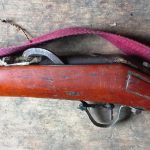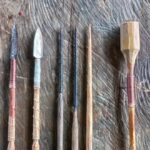The topic of the composition of Khoi-san (Bushmen) arrows for hunting is vast and intricate. Numerous anthropological studies have documented the unique designs utilized by nearly every family group of Khoi-san in Southern Africa. These designs are often a result of specific preferences and adaptations that have developed over time due to the isolated existence of these family bands. Moreover, the varying degrees of influence from neighboring Bantu-speaking tribes are also reflected in the composition and designs of their arrows.
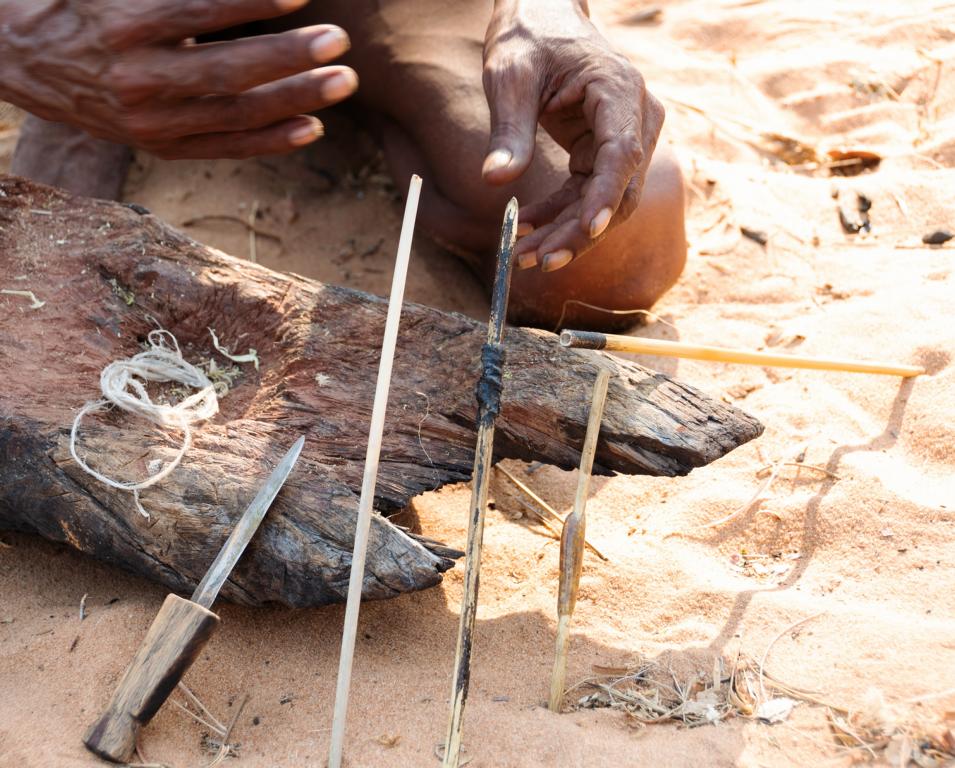
Arrow compositions have become more standardized now.
Certain Khoi-san groups, such as the Hai//om at Etosha Pan, traditionally crafted single wooden arrow shafts using Grewia sp. Other Khoi-san groups, however, typically utilized reed stems as shaft material and designed a three-piece composition for their arrows. Arrowheads were commonly crafted from bone, stones, hardwood, glass, or metal and came in various shapes. For many years, anthropologists have debated whether or not Bushmen utilized feathers on their arrows.
Unfortunately, these questions have become increasingly irrelevant in modern times. Over the past century, “civilized” societies have nearly eradicated all Khoi-san groups beyond a reservation in the Northeast of Namibia. Even these last remaining groups are currently under severe threat. Since the area is no longer a designated reservation and is open to all citizens, the gentle Khoi-san are frequently oppressed by members of other tribes.
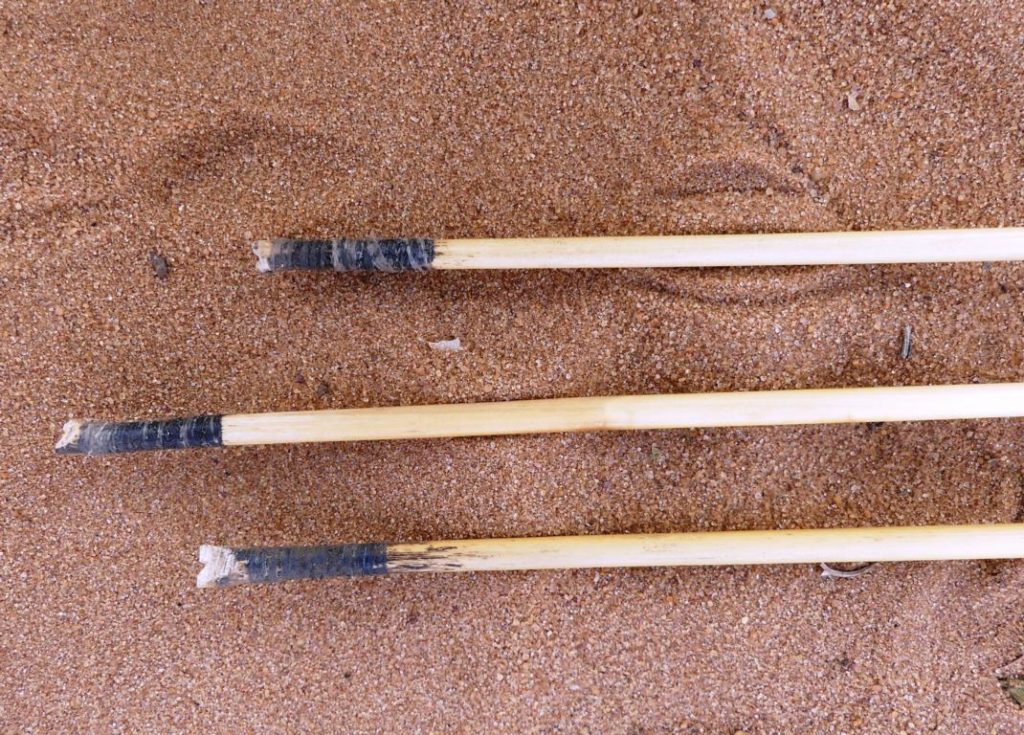
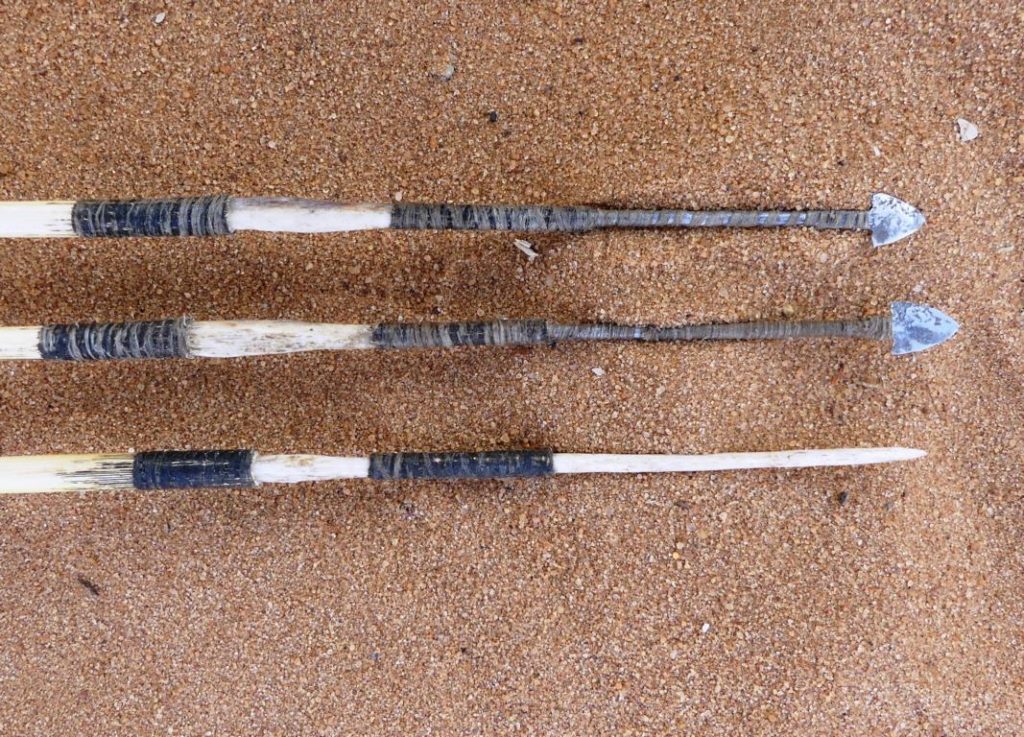
Composition of contemporary Khoi-san hunting arrows
This article will focus on how the last remaining Ju//hoansi Khoi-san craft their arrows today, emphasizing those intended to act via poison rather than cutting blood vessels or delivering a shock upon impact. The Khoi-san also create slightly shorter variations of these arrows for tourists, as well as simple reed arrows with wooden tips for training their children.
As is well-known, the bow and arrow must function as a single system. The size and strength of the bow, as well as its brace height, determine the draw length of the arrow. For a hunting bow, a general rule of thumb is that the arrow length should be approximately three times the brace height, which means that a hunting arrow should measure around 60cm/23 inches in length with a brace height of 20cm. These Khoi-san arrows are relatively lightweight, with an average total weight of around 7 grams for a metal-tipped arrow. The metal head typically weighs around 3 grams, while the link- and main shaft weigh approximately 2 grams.
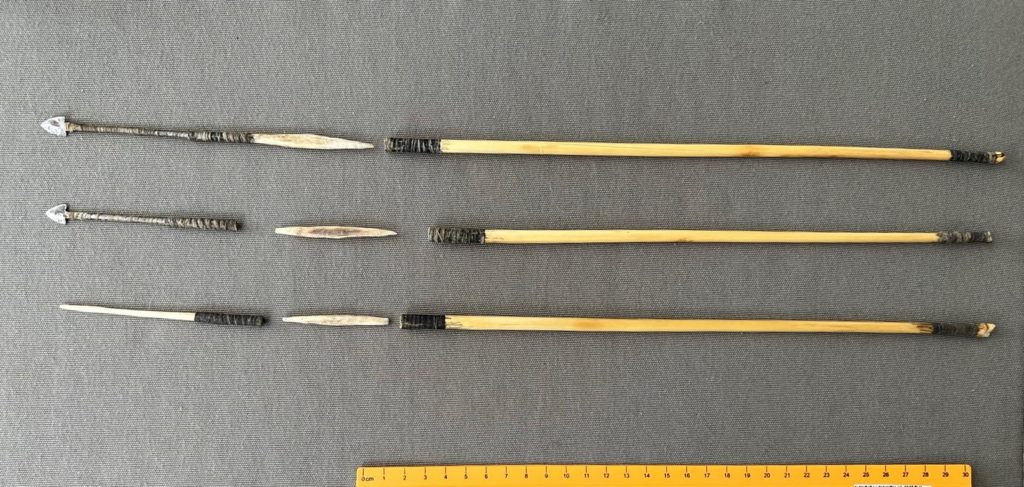
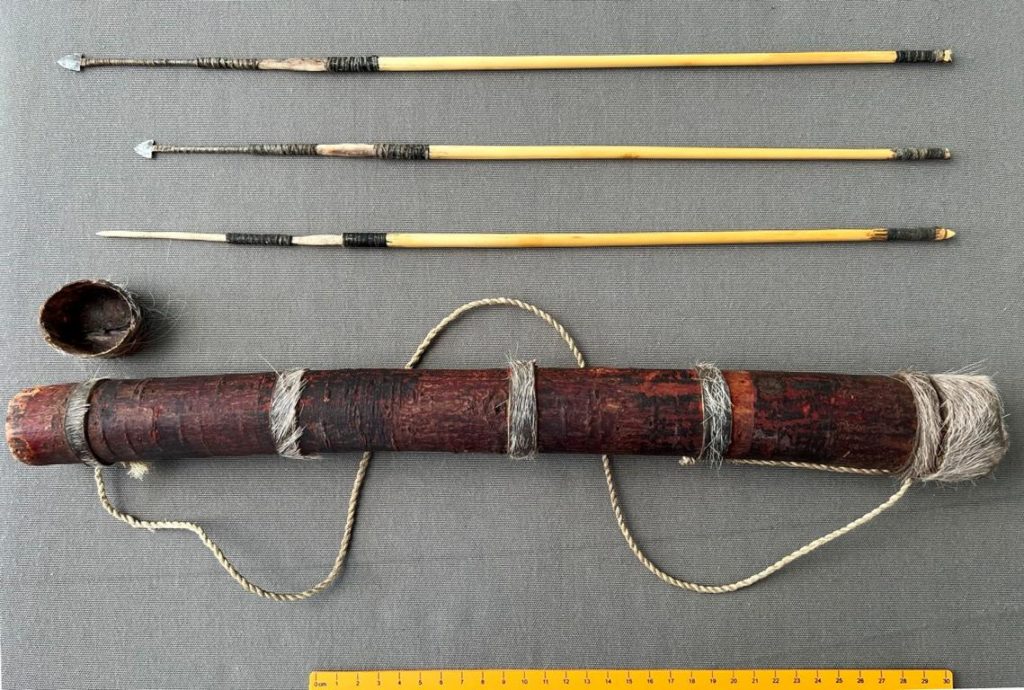
Hunting arrows typically consist of three detachable parts: a reinforced main shaft, a link shaft made of bone, and an arrowhead. The link shaft is attached to the main shaft, and the arrowhead is fitted onto the link shaft. When an animal is struck, a barbed arrowhead or a long, bony arrow tip penetrates the skin and remains lodged there. As the animal moves, the main shaft or main and link shafts detach, ensuring that the arrowhead remains embedded in the animal’s skin and cannot be pulled out.
Arrowheads
Two types of arrowheads are common.
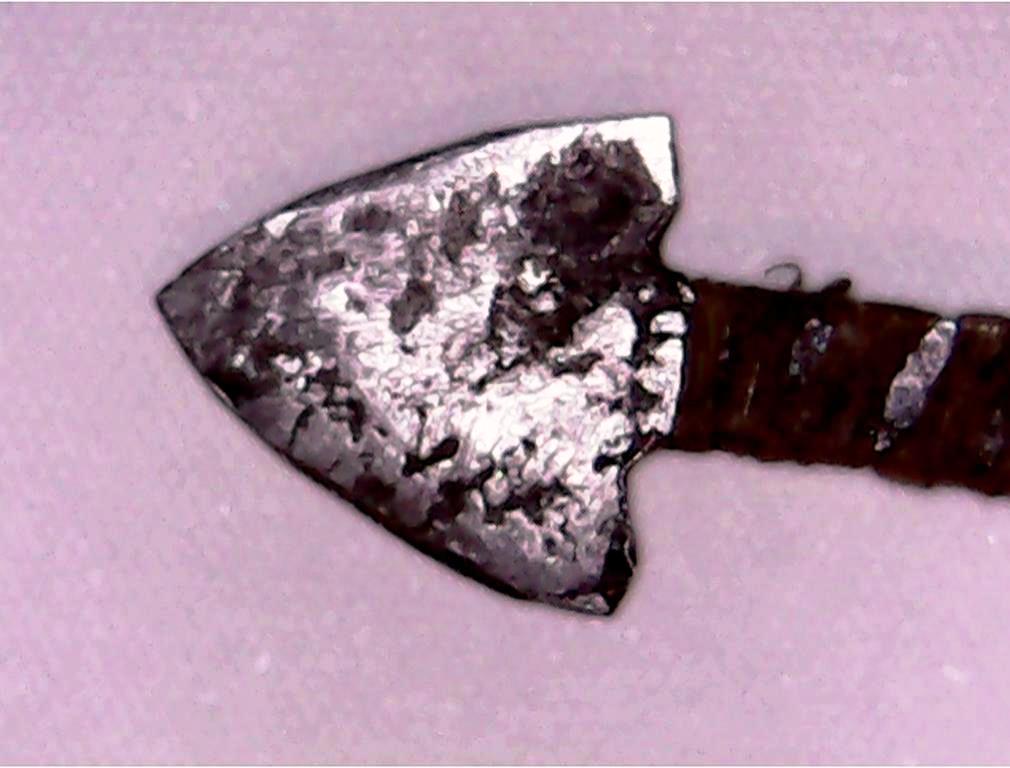
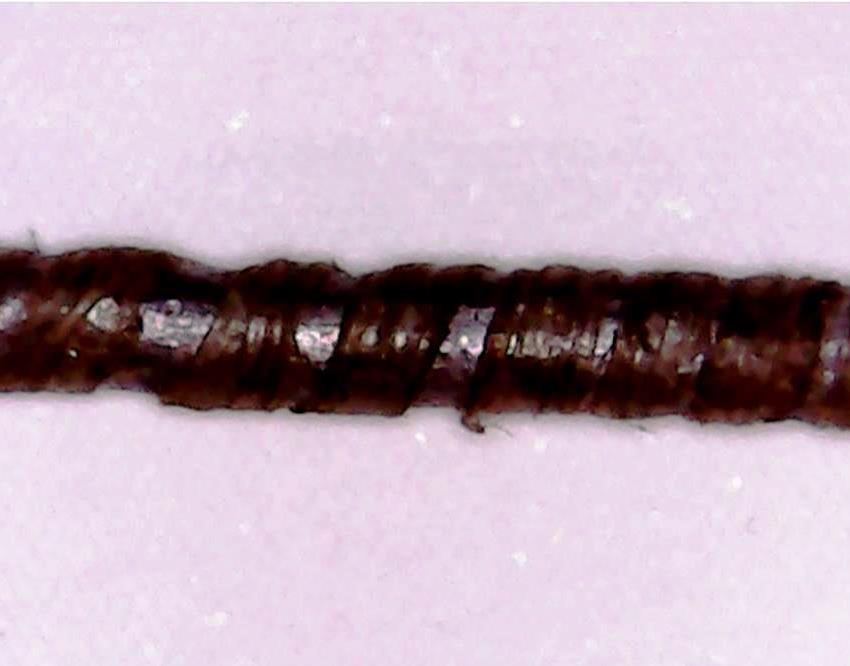
One type of arrowhead commonly used by the Ju//hoansi Khoi-san is a metal triangle tip with a long shaft. The triangle tip is never poisoned, but the shaft is wrapped with animal sinew or ligaments to hold the poison. It is too dangerous for the hunter to have the arrowhead poisoned, as it could cause injury if accidentally touched. For this reason, these metal-tipped arrows with poison on the shaft are always transported in a tightly closed quiver. At the end of the metal shaft, the sinew wrapping is done many times to create a sleeve for holding one end of the link shaft.
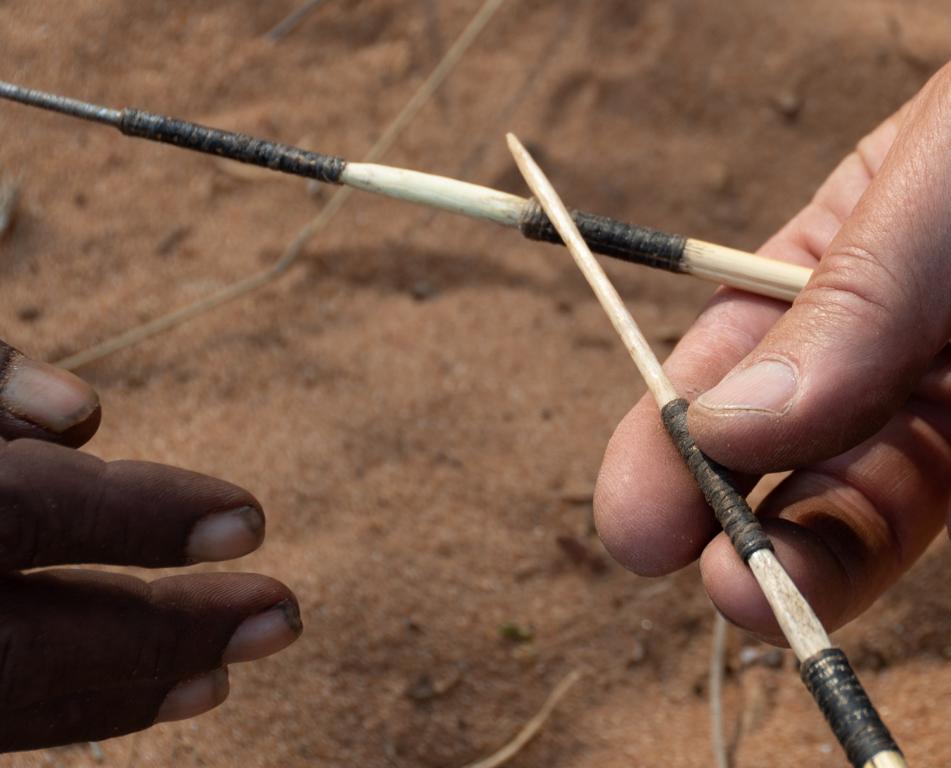
Another type of arrowhead used by the Ju//hoansi Khoi-san is a long, round tip made of giraffe bone. Although this material is very dense, it can still be carved with a knife. Unlike the metal-tipped arrow, this type of arrowhead has no barbs. Instead, it relies on deep penetration into the skin and meat of the animal. In this case, the poison is directly applied to the arrowhead. To prevent accidental poisoning of the hunter, the bony arrow tip is turned around together with the link shaft. And both will be sheathed in the main shaft. More information on this can be found in this article.
Link shaft
The link shaft ensures the arrow detaches from the animal immediately after being hit. Having two connections on a shaft makes it more secure than just one. Ostrich legbone is the preferred material for the link shaft because of its strength and durability. However, if ostrich bone is unavailable, leg bones from other large antelopes, such as eland or kudu, can be used. The shape of the link shaft is typically crude, with two conical shapes on either side.
Main shaft
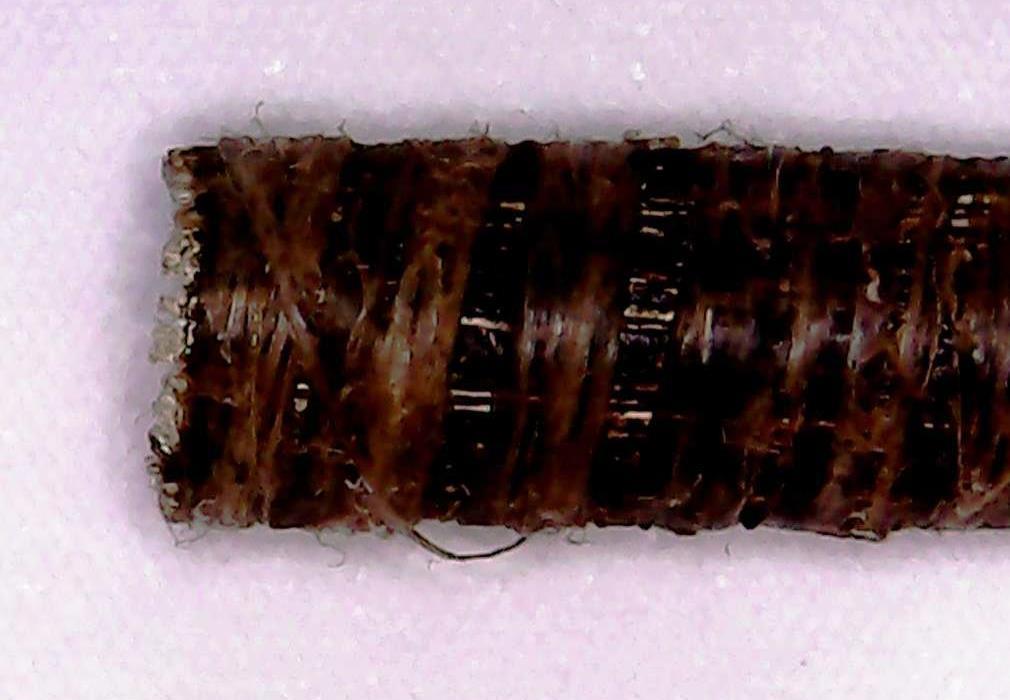
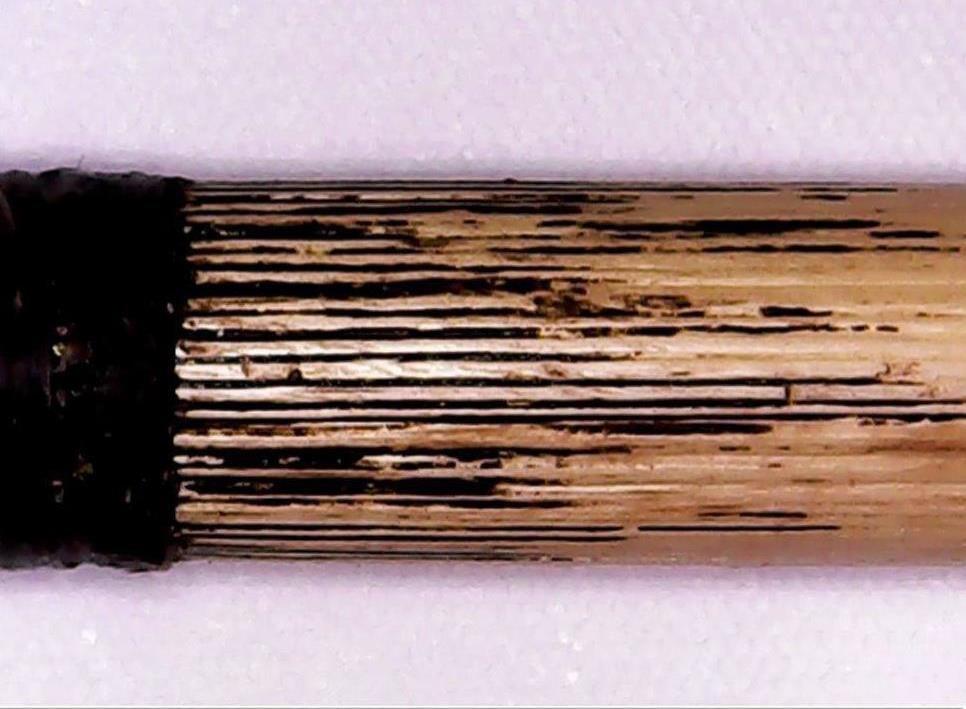
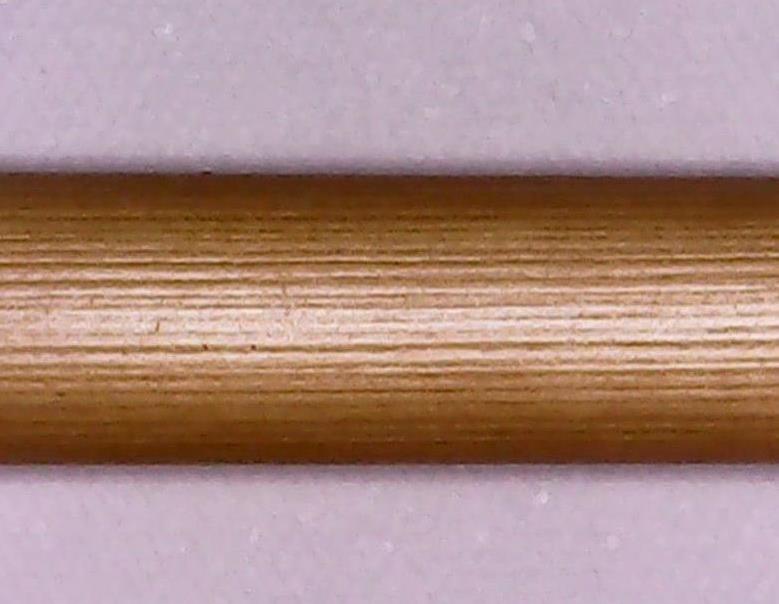
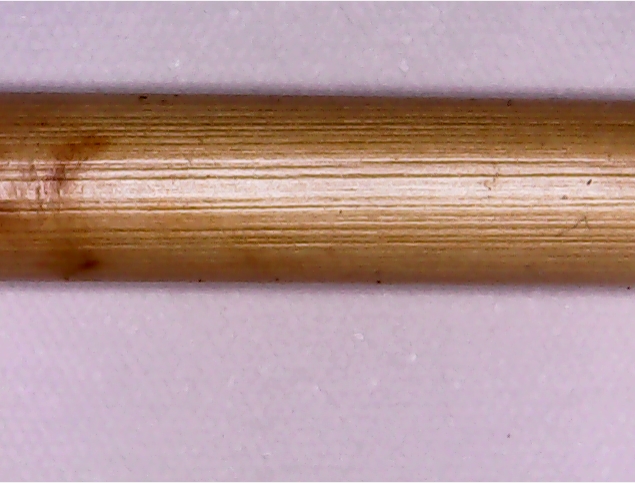
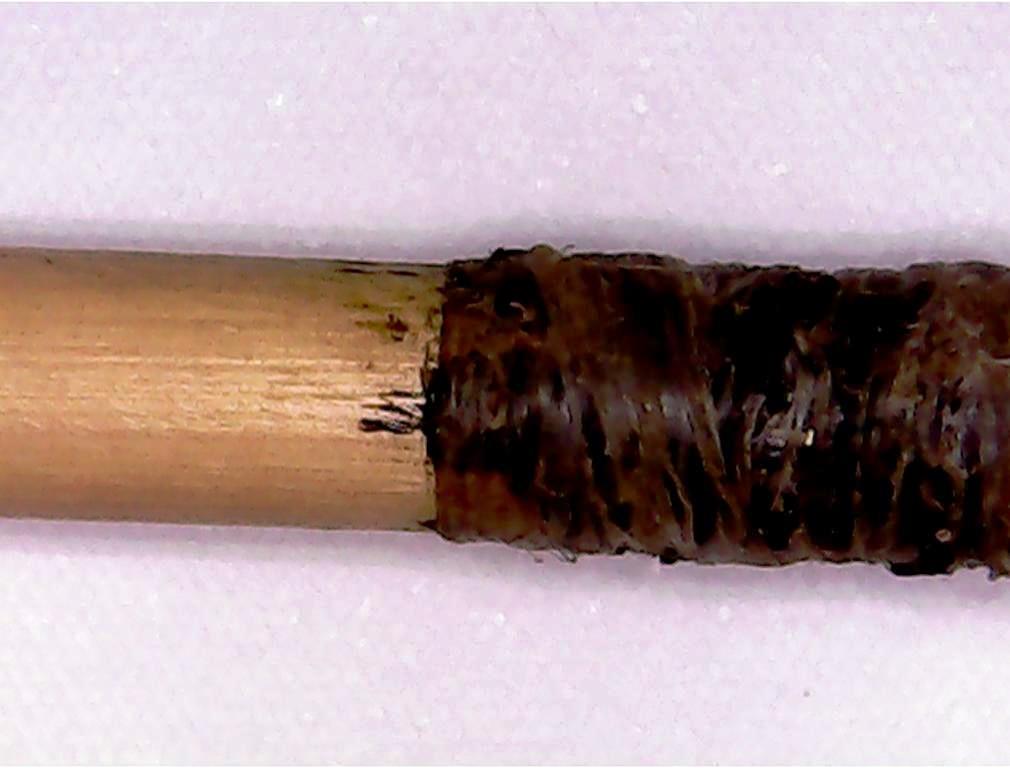
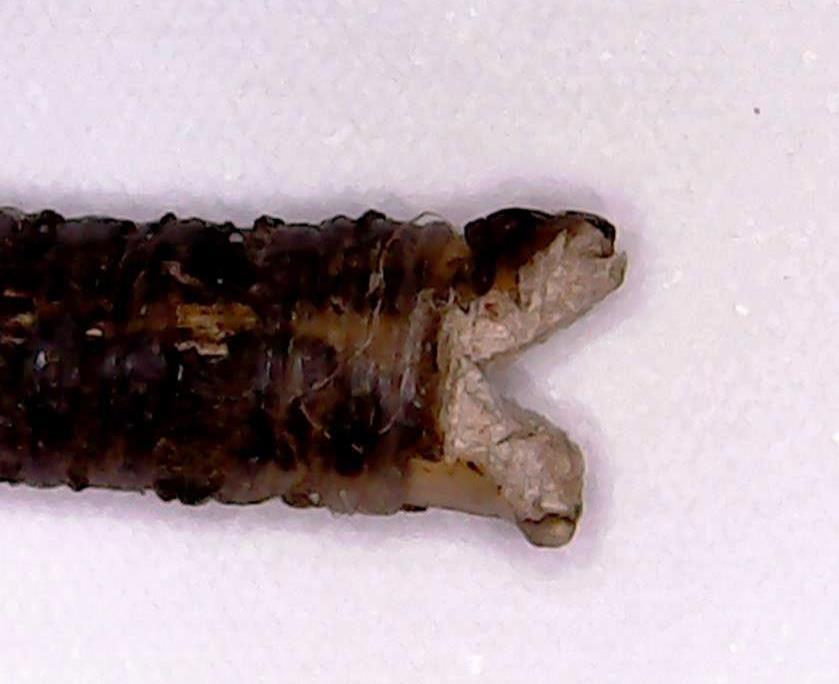
Straight reed stems are commonly used for the arrow shaft. They are reinforced with sinew or ligament wrappings over an adhesive. The V-nock is always cut below a culm node.
Additional material used for arrow-making
In our previous article about manufacturing a Khoi-san bow (see here), we discussed the use of adhesives and ligaments in detail. When it comes to arrows, if giraffe ligaments are scarce, they can be replaced with sinews from other large antelopes.
Other articles on this website delved into bowstring making, which can be accessed here, and discussed the use of Sanseviera leaves as a basis for these strings.
The links provided provide details of the arrowheads, arrow shafts, and fletchings used by the Hadzabe people in Tanzania. Khoi-san, Hadzabe, and Akie people are the last hunter-gatherer tribes in Africa.
Lessons learned about the composition of bushmen arrows:
- There was a wide variety of past Khoi-san arrow designs and compositions.
- Due to the ongoing eradication of Khoi-san communities, these designs and compositions have narrowed to a few variations.
- A Khoi-san arrow comprises three functional parts: the main shaft, the link shaft, and the arrowhead.
- The arrowhead is always poisoned for hunting purposes.
- In metal heads, only the metal shaft is poisoned to avoid accidental injury to the hunter.
- Bone tip arrowheads are poisoned along the entire length and are stored with turned-around tips in the main shaft.
.



